The Ideal Mechanical Advantage Of A Pulley System Is Equal To The
The ideal mechanical advantage of a pulley system is equal to the. Here F A is the anchor load F E is the effort force and F L is the load. B The efficiency of a movable pulley is always less than 100. IMA also equals the distance over which the effort is applied de divided by the distance the load travels dr.
For a single pulley that is fixed to the ceiling we would have an advantage of one. In general the IMA the resistance force Fr divided by the effort force Fe. If we take a perfectly efficient pulley then its mechanical advantage and velocity ratio are both equal to the number of pulleys taken.
The mechanical advantage that is gained with the pulleys is calculated using the formula 2 number of movable pulleys. Give reasons for the following. Simple Pulley Systems.
Systems in terms of their output 31 51 91and so on. Single fixed pulley. This is the image it provides.
The ideal mechanical advantage of the pulley system is equal to the number of loops of the rope pulling the load. More the rope segments It is more helpful to do the lifting the work. However in the single movable pulley Figure 1b half of.
Weight of the object being lifted. C In case of a block and tackle system the mechanical advantage increases with the increase in the number of pulleys. However if the pulley is movable and we attach a weight to it will have a mechanical advantage of two.
The larger the advantage is the easier it will be to lift the weight. Actual mechanical advantage of pulley systems.
A In a single fixed pulley the velocity ratio is always more than the mechanical advantage.
It is a wheel on a shaft that supports the movement of a belt or cable along at its circumference. What is the formula to calculate effort distance. How do you calculate mechanical advantage. Single fixed pulley. Here F A is the anchor load F E is the effort force and F L is the load. In other words you would need to put less effort into lifting the weight. IMA also equals the distance over which the effort is applied de divided by the distance the load travels dr. A In a single fixed pulley the velocity ratio is always more than the mechanical advantage. B The ideal mechanical advantage equals the length of the effort arm divided by the length of the resistance arm of a lever.
B The efficiency of a movable pulley is always less than 100. The effort distance also sometimes called the effort arm is shorter than the resistance distance. The ideal mechanical advantage of a pulley system is equal to the distance the load has to move. But a larger pulley has increased bulk weight more and cost. Actual mechanical advantage of pulley systems. This is the image it provides. What is the formula to calculate effort distance.

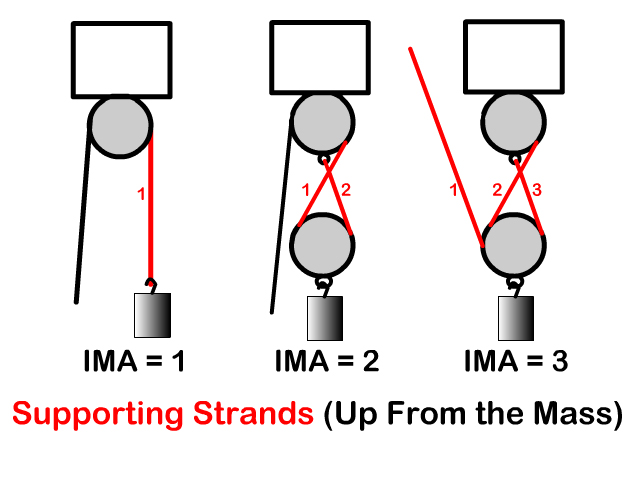



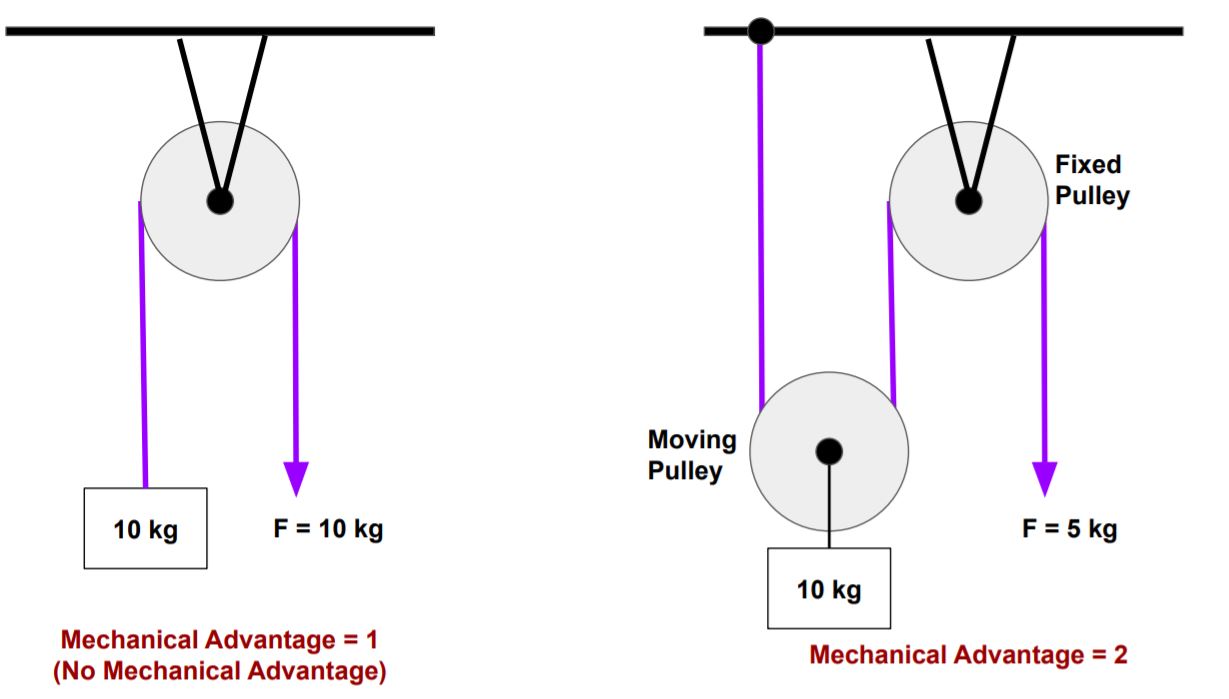
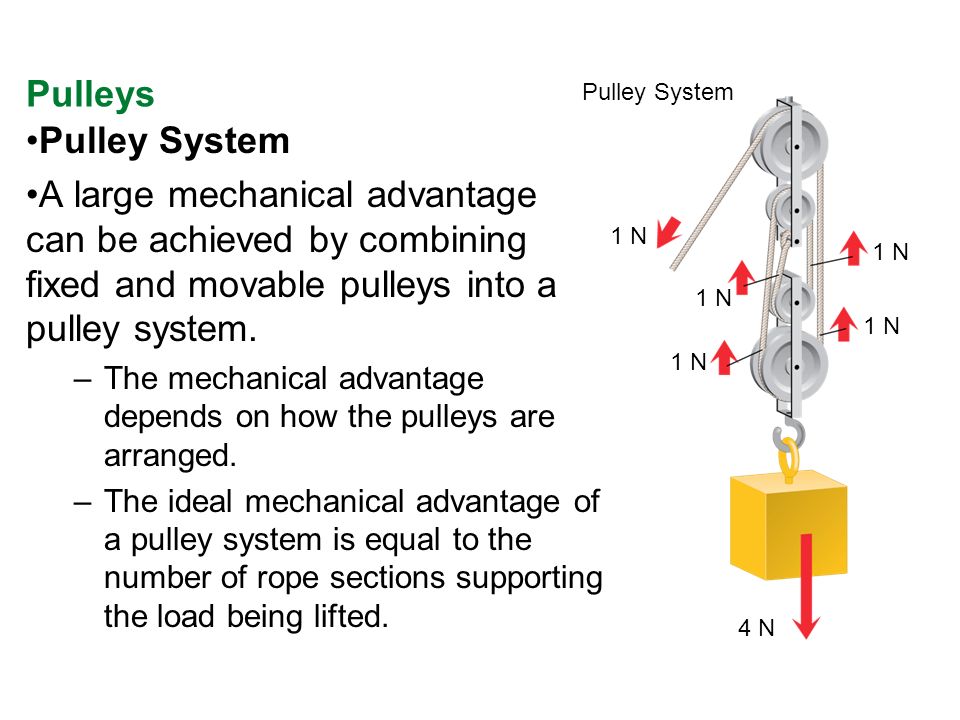

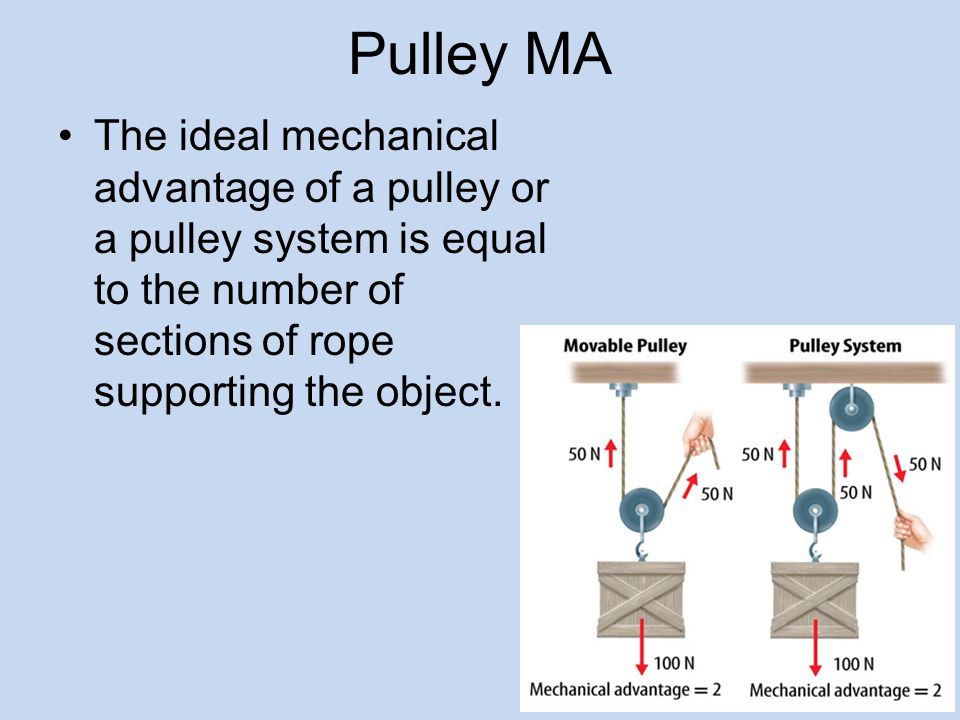










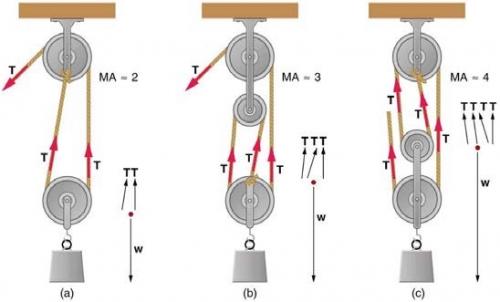

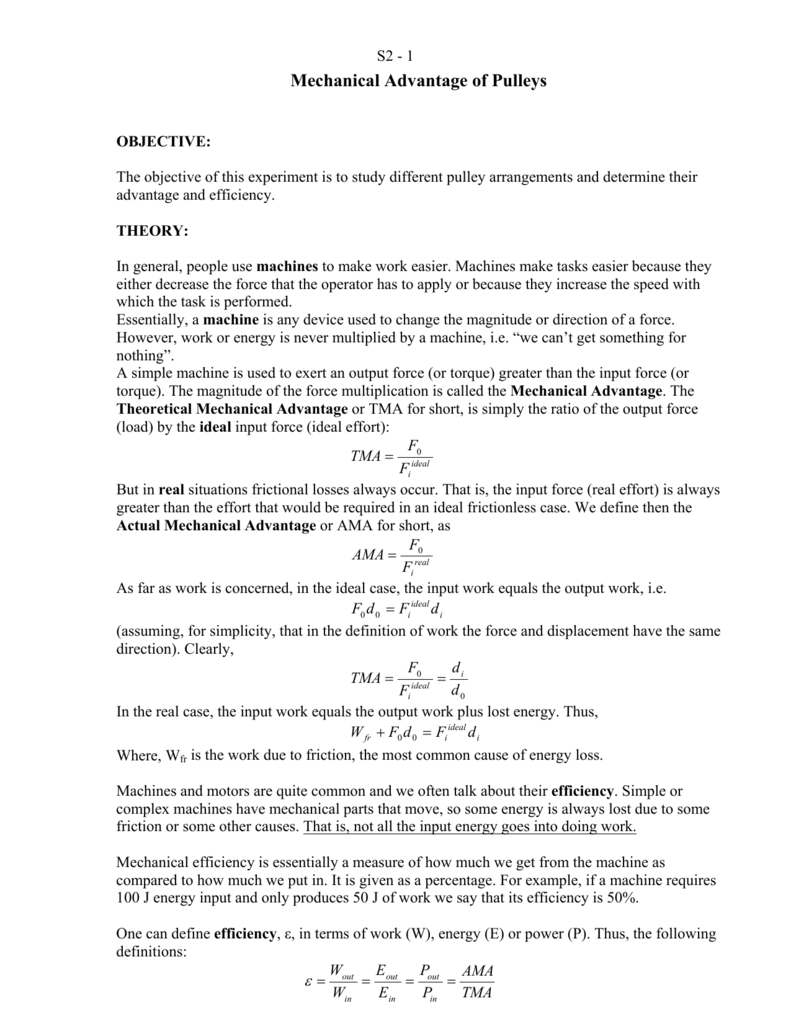

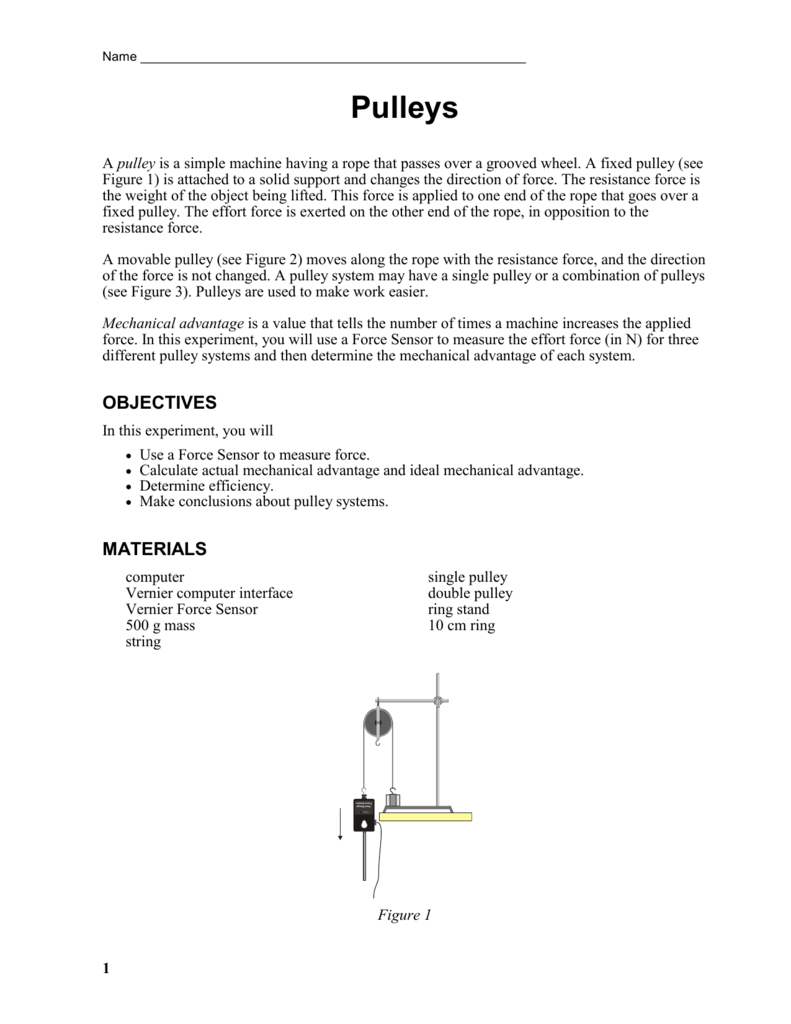
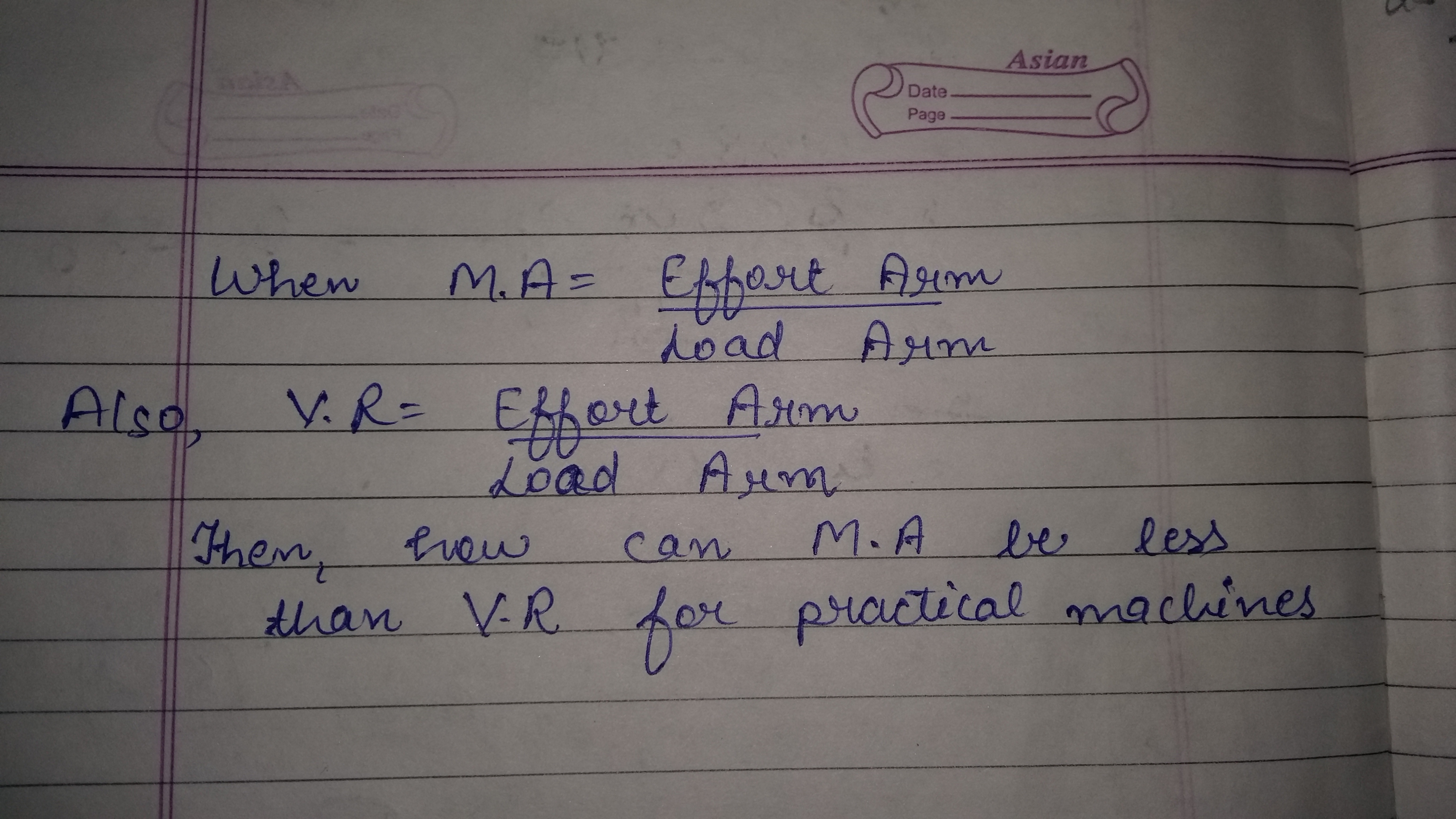
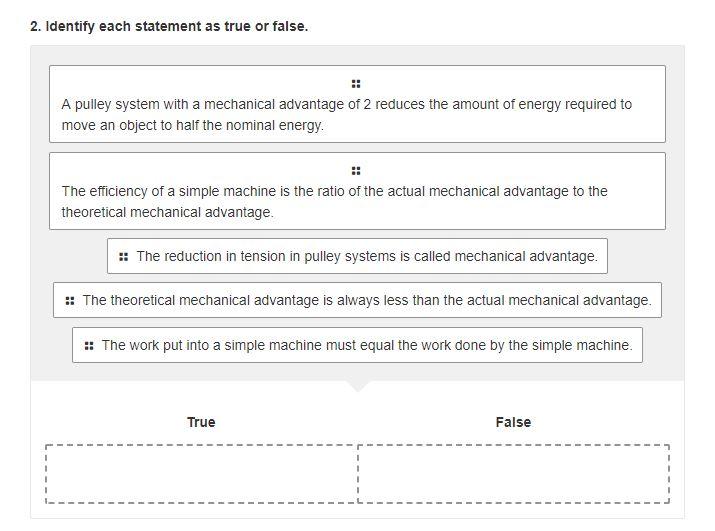

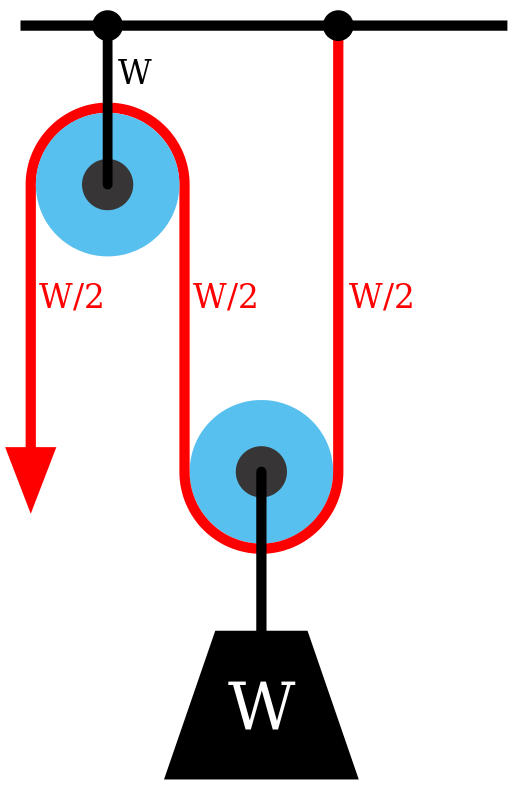
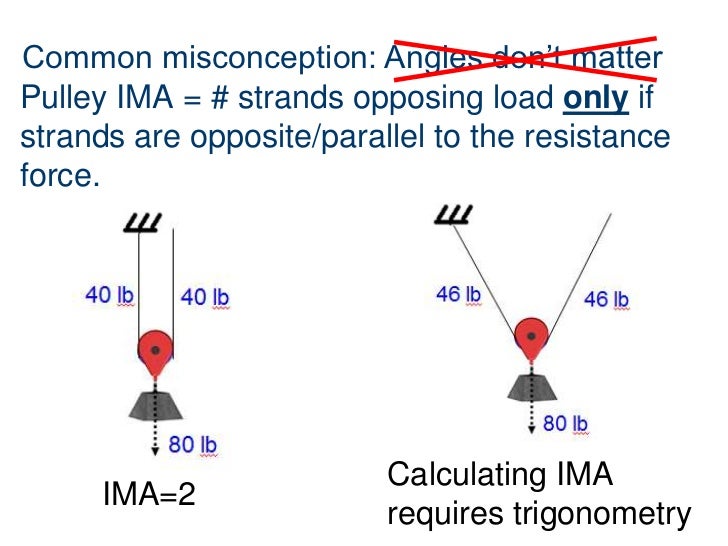









Post a Comment for "The Ideal Mechanical Advantage Of A Pulley System Is Equal To The"